Famous Tarleton Landmarks
THE CANNON AND THE 1928 INCIDENT
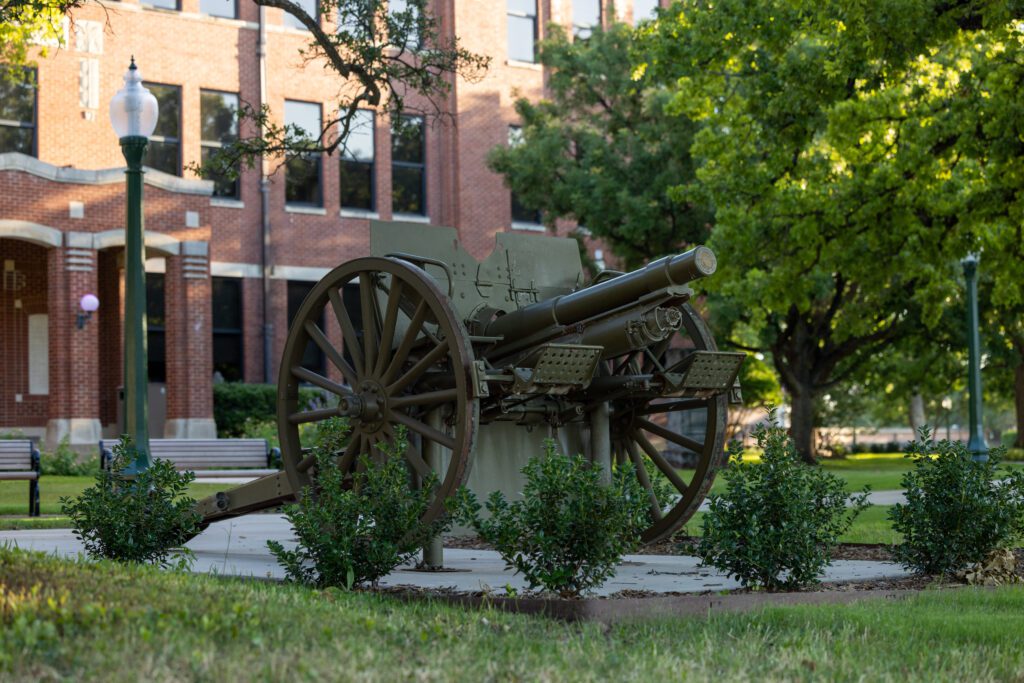
The cannon that sits in front of the E.J. Howell Building is perhaps Tarleton’s most recognizable landmark. This 1902 model artillery piece was brought to campus in 1922 to serve ROTC training purposes. The cannon was also frequently fired during celebrations and special events until the outbreak of World War II. Firings were ceased because blank ammunition became rather scarce during the war years. Shortly thereafter, Dean J. Thomas Davis ordered the muzzle sealed and the barrel welded into a fixed position. In 1946, the cannon was placed in its current location, where it has remained stationary and silent for almost 60 years. A campus legend proclaims that it will automatically fire again whenever a virgin walks in front of it. Thus far, observers are still waiting for such a phenomenon to occur.
In 1928, the cannon played a key role in one of Tarleton’s more interesting episodes. Tarleton’s bitter rival, the North Texas Agricultural College, stole the gun during the week of the annual football game. The NTAC students had regularly attempted to vandalize the cannon but decided to escalate their aggression on this occasion. The invaders intended to do irreparable damage to Tarleton’s morale by stealing this prized campus symbol and bringing it back to their Arlington campus. Fortunately, the cannon proved extremely difficult to tow, and the bandits were forced to dump their prize into the Bosque River right outside of Stephenville. Manual arts instructor E.A. “Doc” Blanchard rescued the cannon from its watery grave by using a tractor to tow the submerged artillery piece to safety. Blanchard then repaired the now-broken wheels by hand, thus guaranteeing that future generations of Tarleton students would be able to derive aesthetic pleasure from this landmark (Guthrie 64-65, 386-387, King 149, 237, Traditions 24).
THE SMOKESTACK

The smokestack that towers over the east end of the Tarleton campus was built in 1923. It was once used in conjunction with the central heating plant that was added in 1920. This plant provided heat, light, and power for most of the buildings on campus. The smokestack was restored in 1998 with the name “Tarleton “ written along the side. A campus legend proclaims that an invader from North Texas Agricultural College (NTAC) flew an airplane over the smokestack and dropped a brick down the shaft. Thus far, investigators have yet to probe the depths of the pipe in search of this foreign object (Guthrie 60, Traditions 26).
THE HUNEWELL BANDSTAND
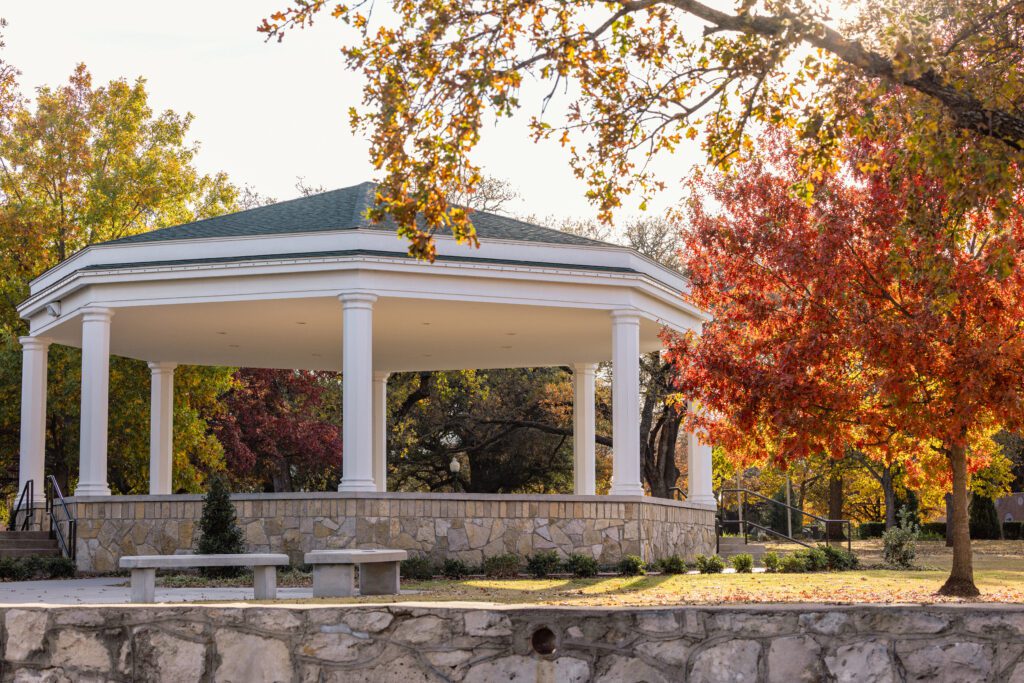
The Hunewell Bandstand was one of the most beloved landmarks in the history of Tarleton. It stood in an area known as Hunewell Park on the space now occupied by the Tarleton Center (directly south of the girls’ dorms on the southeast corner of campus.)
The bandstand was completed in 1928 courtesy of a donation from the graduating class of 1927. The structure resembled a gazebo with a stone foundation and wooden roof. This bandstand was mostly built by students and named in honor of longtime band director Dennis Hunewell. The college band was also given the surrounding land that they turned into a park. This area was developed by the students and became a beautiful site for band concerts or other social activities. Hunewell Park was turned into a recreation area in 1939. A mini golf course and courts for tennis and volleyball were built there.
The place remained a very popular hangout for students until 1963. At that time, the bandstand was destroyed to make room for the newly planned Student Center (later renamed the Tarleton Center).
Over the years, several attempts were made to rebuild the Bandstand, but finally, a fund-raising drive by the Tarleton Alumni Association was responsible for the reconstruction of the Bandstand and its subsequent dedication at Homecoming 2005. A bronze plaque at the site, mounted on a pedestal created with rock from the original Bandstand, relates the history of the structure
JOHN TARLETON STATUE
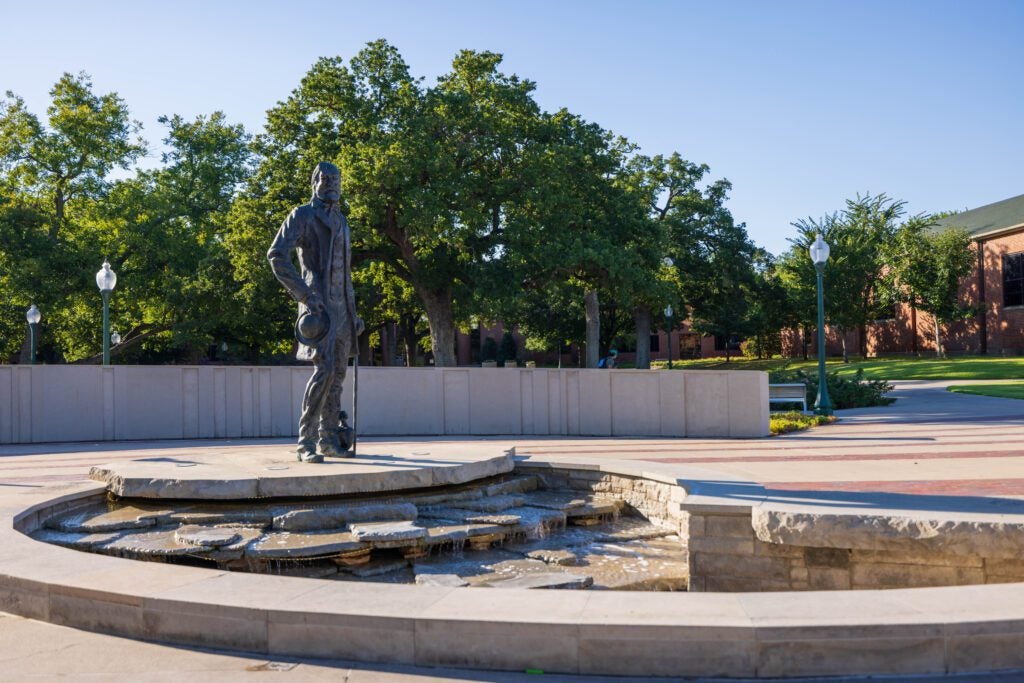
Alumni Island features a 10-foot-tall statue of our founding father, John Tarleton, and his pet duck, Oscar P. This symbol of history, tradition, and far-reaching vision is also used for university events and by students to meet and socialize between classes.
John Tarleton, an Erath County pioneer and businessman, bequeathed nearly $100,000 following his death in 1895 to establish the university that bears his name. His dream was to create an institution of higher education for students of modest means.
The statue was created by Kenneth Wyatt, a 1946 Tarleton graduate and world-renowned artist known as the Norman Rockwell of Western Art.
A ceremony to unveil a 10-foot bronze sculpture of Tarleton State University’s legendary founder was held in 2015 at Alumni Island on Military Drive.
THE TROGDON HOUSE
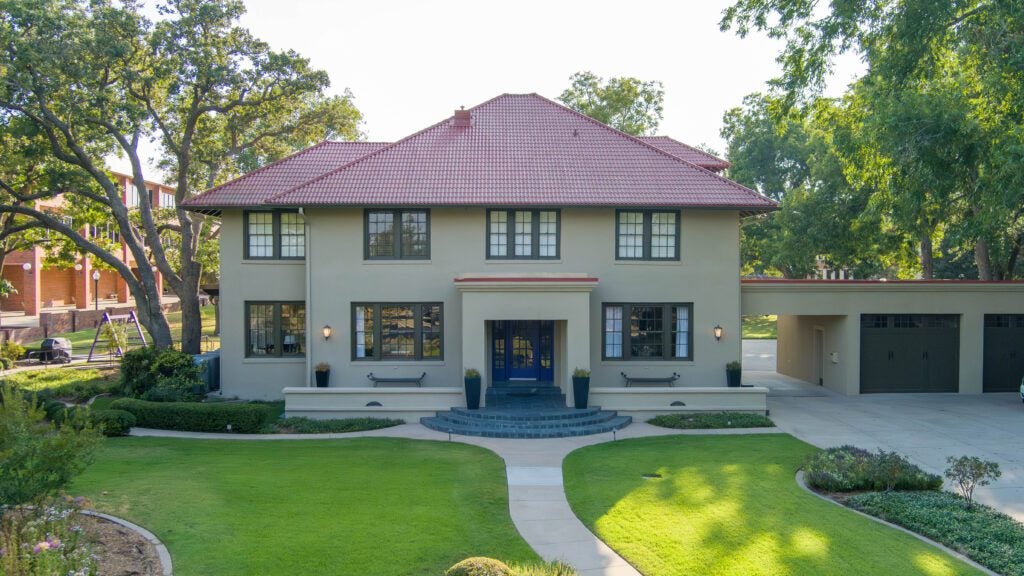
For most of a century, Tarleton State University’s Trogdon House has been a hub of activity and tradition in Stephenville.
The two-story building, a stately 4,500 square feet, sits at the heart of the campus, between the O.A Grant Building, the E.J. Howell Education Building and the Dick Smith Library.
Built in 1923, it has housed university presidents, starting with its builder and architect, Dean J. Thomas Davis, who shared the dwelling with his family until he turned over the reins of power in 1948.
Construction was overseen by Davis and involved primarily student labor, which kept costs low — about $8,000. Students and local workers were paid from 25 to 62 1/2 cents per hour.
The house features two full stories and an attic with 18-inch exterior walls built up with several layers of concrete plaster.
Dean E.J. Howell and his family moved into the house in 1948 and, over the years, added a garage, a breezeway, a screened porch, and central heating and air. The home’s namesake, Dr. W.O. Trogdon, came to Tarleton in 1966 for a 16-year stay.
Soon after the Trogdons left, a university master plan stipulated the historic structure be torn down, or at least relocated.
Tarleton’s student government, university alumni, and the Erath County Historical Society intervened and gained Historical Landmark status for the aging building, giving it new life.
The structure was saved from demolition and renovated in 1995. In 1999, the Texas A&M University System approved the name Trogdon House in recognition of the last family to occupy it.
Once named the Hall of Presidents, the Trogdon House has been home to various administrative offices, including Student Services, University News Service, the Alumni Association, the Office of Development, and the Tarleton Foundation, Inc.
A driving force behind the restoration was legendary alumnus Col. Will Tate, Class of 1935.
Now home to the family of President James Hurley, Trogdon House hosts campus and community functions.
THE ROCK GATES
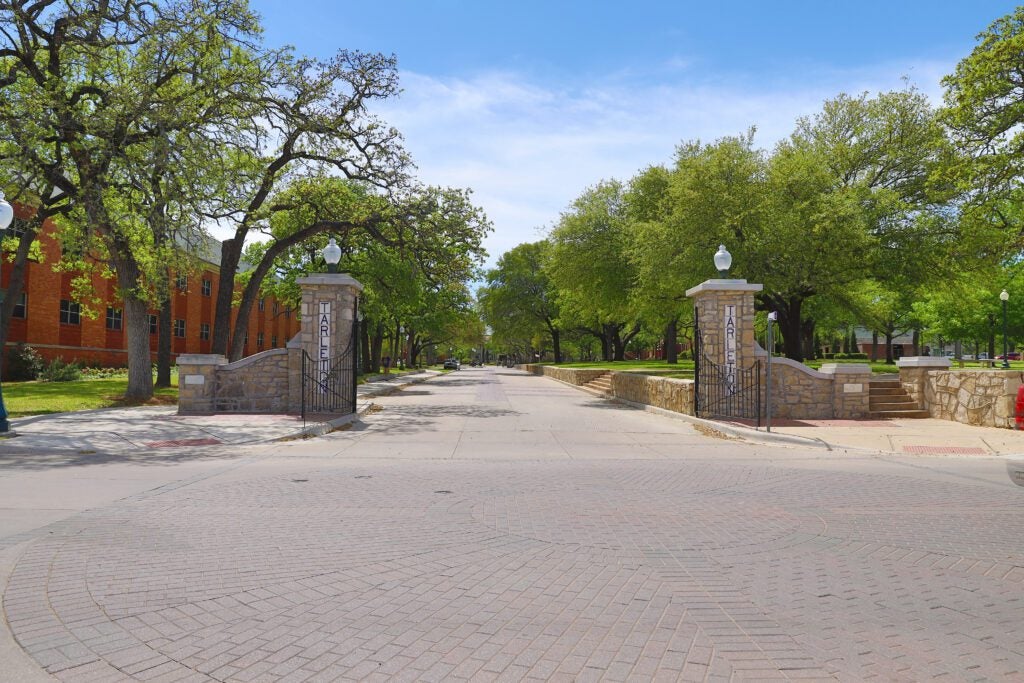
The rock gates that are located in three campus locations are among Tarleton’s more recognizable landmarks. The most symbolic of these entrances is located at the intersection of Military Drive and McIlhaney Street at the east end of campus. This gate was designed by manual arts director E.A. Funkhouser and financed by the graduating class of 1925. Ten years later, the class of 1935 donated the metal part of this gateway. (This is the actual portion that opens and closes.) The entire entrance was widened in the early 1960s. This modification was necessitated by a minor emergency in which fire engines were unable to fit through the gates during a Dining Hall fire. Today, this gateway only serves as an exit from the campus.
A second gateway is located in front of the new Administration building on Washington Street. The classes of 1932 and 1934 paid for this addition. These gates were closed to through traffic in 1984 when construction began on the Administration building. The closing of this entrance created a bit of consternation among the student body because it interrupted the social ritual of driving up and down Washington Street. This certain gate had provided a very handy route from which to return to the campus. Today, Tarleton students engage in a tradition entitled “cruising the island” during the first week of the fall semester. These spirit-filled students pay homage to this bygone era by driving around in a parade-like manner in front of the Tarleton Center.
The third gate is located at the intersection of Vanderbilt Street and Doc Blanchard Boulevard. It was built courtesy of the Class of 1933. This entrance is the most heavily utilized of the three stone gateways, as it provides access in and out of the senior honors parking lot. It is also the most convenient course for traffic coming to and from the girls’ dorms (Guthrie 63, 255, King 150, Traditions 28, 33).